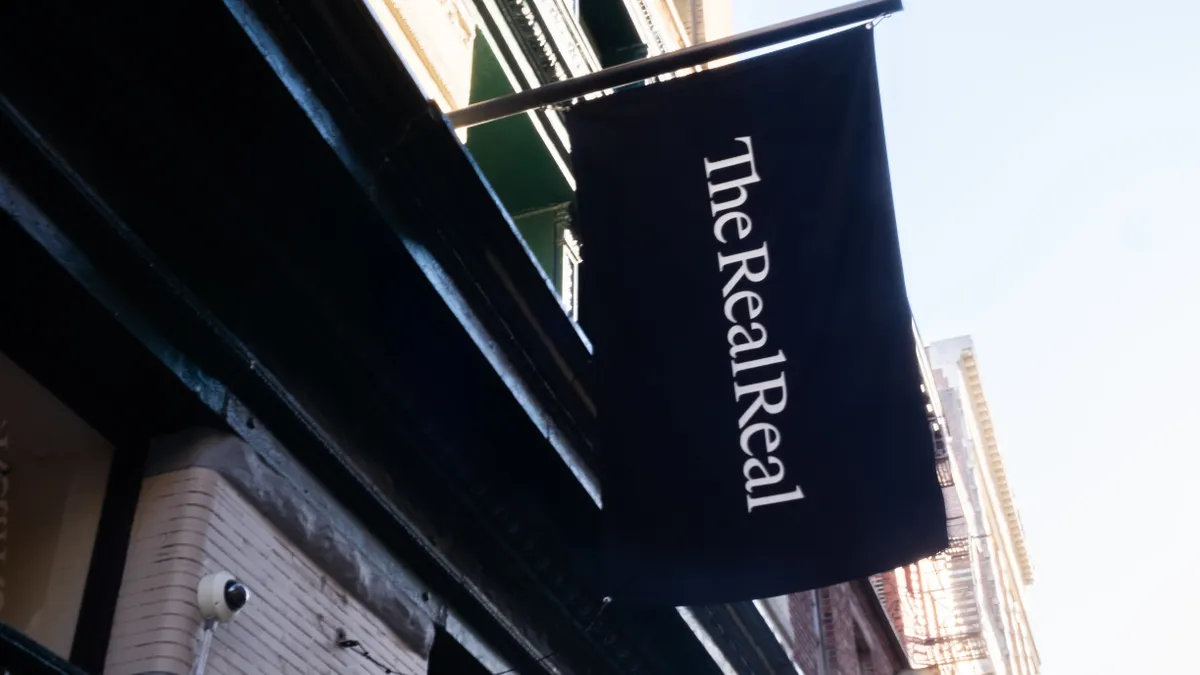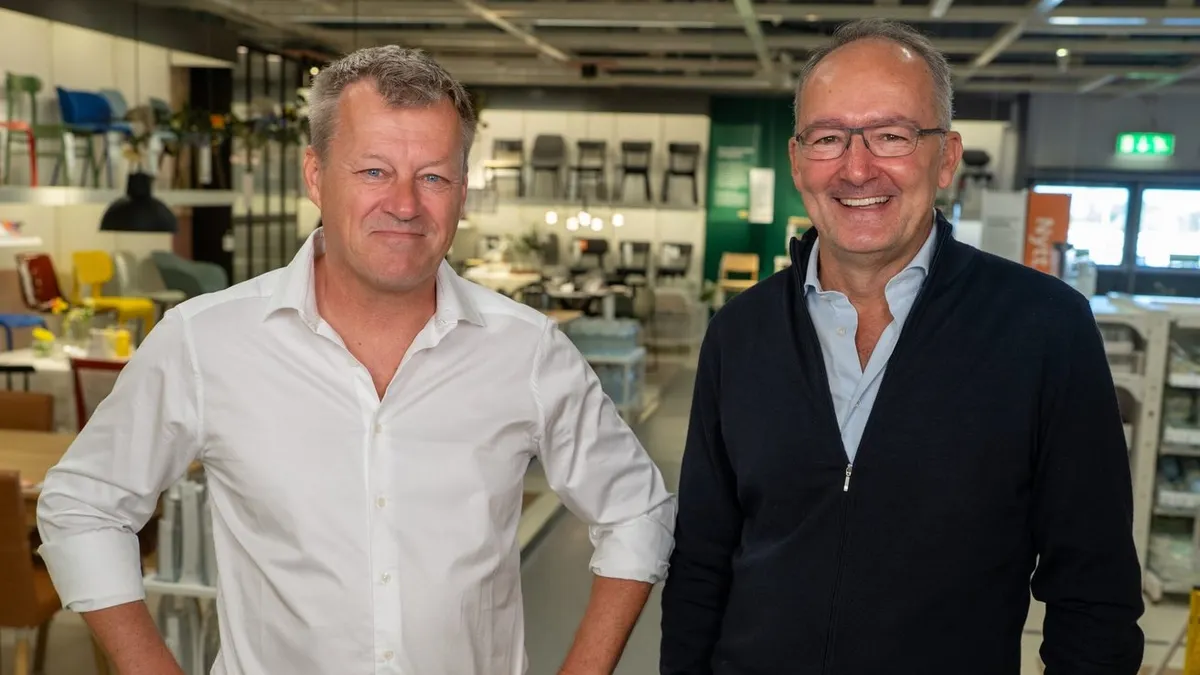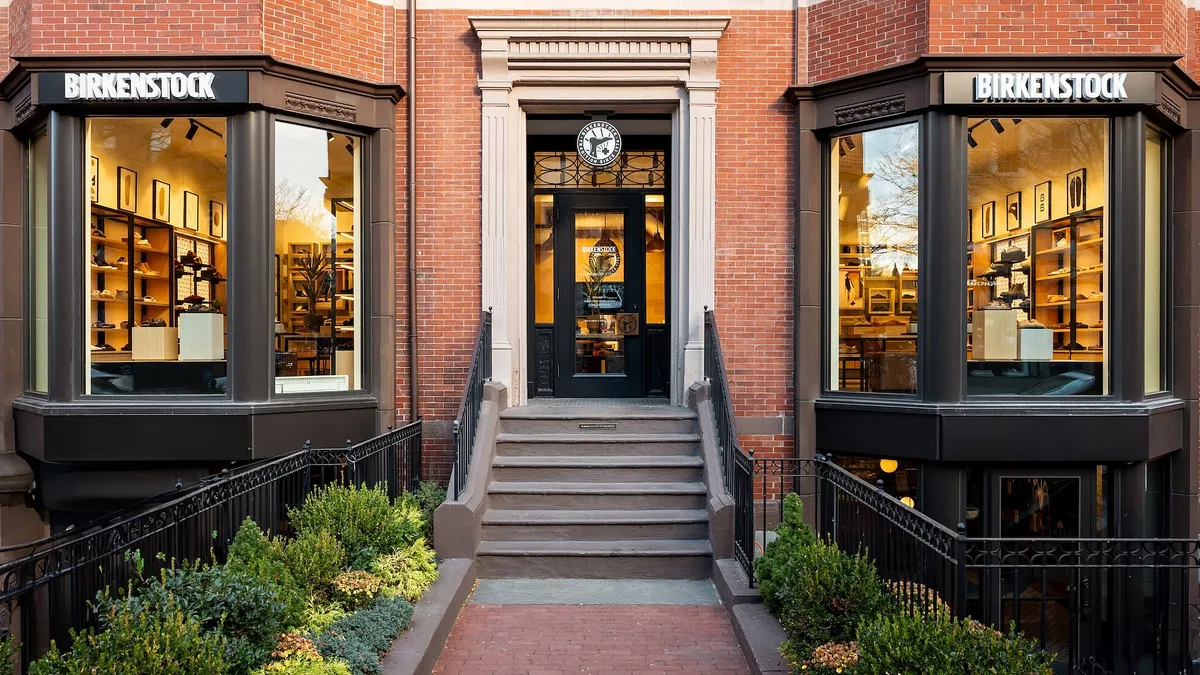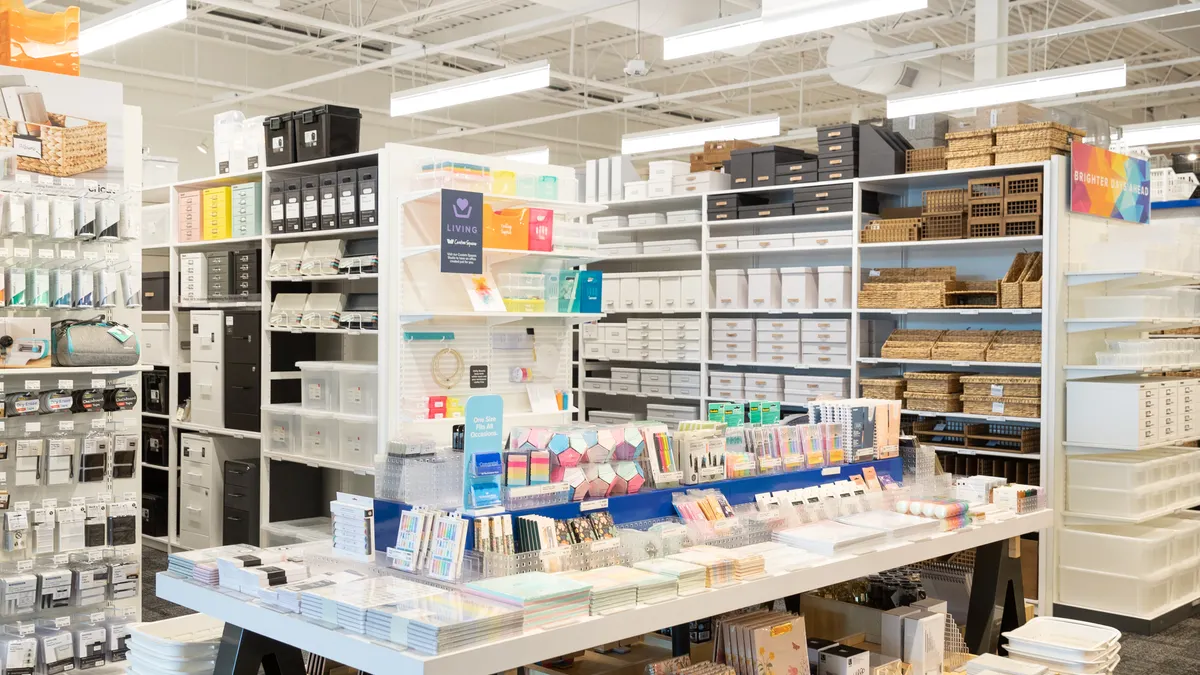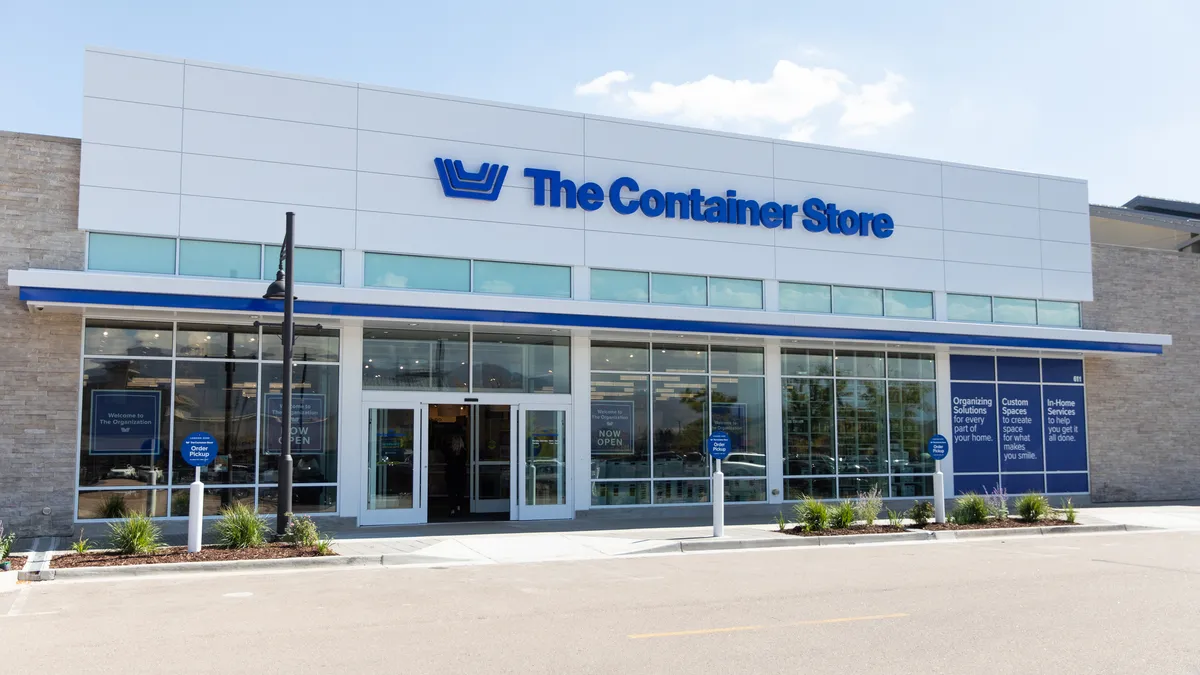For e-commerce darlings, IPO filings often reveal to the world the high costs of earning the love of customers.
Chewy, an online giant in the pet space, revealed consistent profit losses over its operating history when it filed IPO papers in 2019. So did The RealReal. So did Farfetch. So did Casper. More recently, so did ThredUp.
Until last year, Wayfair racked up a net loss for every year it ever reported on, going back to 2011. By the end of 2019, the online home goods specialist had an accumulated loss of more than $2 billion. It took a pandemic-driven surge in home goods demand to finally push Wayfair into profitability, which, the company acknowledges, won't necessarily last.
The losses disclosed by those publicly traded players shed light on just how hard e-commerce is on the bottom line. In theory, it should be a highly profitable venture. Instead of shipping goods out to a sprawling store footprint, each with their own staffs and leases and other expenses, and a corporate infrastructure to support all of it, products are shipped through a single or handful of warehouses. But last mile and return costs, and the hugely expensive proposition of getting the attention of customers in a crowded online universe, often conspire to devour profits.
Yet losses in the near term are often absorbed as the cost of future profitability. "Growth is the No. 1 priority," said Hemant Kalbag, managing director with Alvarez & Marsal's consumer and retail group. "The game here is to own as much of the traffic as early as possible. That's why growth is really, really important. And the expectation is, with size and scale over time, profitability will follow."
In that environment, not growing quickly enough is its own risk. "The barriers to entry are essentially one really good idea and entrepreneur away," Kalbag said.
Put simply, e-commerce is a tough business. And while it's been around in recognizable form for nearly 30 years, it is still relatively young and viewed as a nascent technological industry by venture capitalists and Wall Street investors.
Some of that is to be expected. The growth opportunities and cost of scaling a business and acquiring loyal customers ("loyal" being an operative word when it comes to long-term sustainability) may well make such investments pay off in the long run.
"When you're thinking of scale, it's a question of what is the market opportunity," said Matthew Katz, managing partner with advisery firm SSA & Company. "How big is the market? How much of that market do you currently have? What is the reach your offering might provide? What's different about it, what's unique about it?"
But companies can only make losses for so long before questions arise around the viability of their model.
"Wall Street has a tendency to look at anything that's in e-commerce, jump up and down, get terribly excited about it and say, 'Oh, isn't it wonderful?" said Neil Saunders, managing director of GlobalData. "They'll give them absolutely phenomenal valuations, and yet they'll push down stock like Walmart because they see it as being old-fashioned, even though it's sound and solid and an enormous business. Wall Street can be very fanciful when it comes to e-commerce stocks."
It's not just investors at risk when valuations become detached from operating fundamentals. Other retailers, with different expectations around them, often have to compete against companies with a license to burn cash. "They mess up the economics for everyone else," said Greg Portell, lead partner in Kearney's consumer and retail practice. "Some of your startups, if they don't have the expectation of being profitable, they can make supply chain choices, product choices, pricing choices, that are completely different."
Amazon to some extent set the pace and terms for other e-commerce players, as well as their investors. The company taught the market to withstand losses for long enough to build something durable. Amazon also set an example for building something bigger than a simple retail business.
For others, that can be a marketplace, a service, a valuable data set, a technology or something else new to the market. "The ability to build a network that can then serve other purposes becomes incredibly powerful," Portell said. "The Amazon model is the one everybody's after: loses, lose, lose, but build something that is incredibly moated."
Kalbag also noted that many growing e-commerce companies could ultimately be targets for strategic acquirers, such as other retailers or technology companies. For their managers and investors, that could be one more reason to tolerate losses for an extended period.
All of this said, many digital specialists had a banner 2020, as several years's worth of projected e-commerce growth took place in less than 12 months, most of it driven by the pandemic.
"For the online retailers, we had about as much tailwind as we could ever hope to have for them," said James Gellert, chairman and CEO of financial analysis firm RapidRatings. "The question will remain how many of those new customers were they able to convert and will they maintain? And how much did buying patterns change situationally versus change systemically?"
Gellert's firm has a system that rates companies on both their near-term and medium-term financial health, based on a wide set of metrics drawn from a company's financial reports. The goal is to measure their default risks and how efficiently a company is at generating sales and cash from their assets.
With data from RapidRatings, we examined a selection of the most-watched online specialists in the industry. Their models, approaches and products all differ for the most part, but all are relatively young compared to legacy players. The goal was to compare their growth and market value with their underlying financial durability to see which models might have what it takes to last.
(Note: RapidRatings' Financial Health Rating is a short-term measure of a company's overall financial health on a 0 to 100 scale (100 being the healthiest). The Core Health Score is a medium-term measure (also 0 to 100) of a company's operating and structural efficiency.)
Farfetch
| Financial Health Rating (out of 100): | 38 |
|---|---|
| Core Health Score (out of 100): | 21 |
| Market cap: | $17.5 billion |
| Sales growth 2018-20 | +178% |
| Operating income: | -$619.8 million |
| Long-term debt: | $1.4 billion |
Source: RapidRatings, SEC, Google finance | Note: Financial figures are from 2020. Market caps are as of June 15.
Online luxury specialist Farfetch says it exists for "the love of fashion." Founded in 2007 by José Neves, today the company has more than three million active customers and as of last year generates more than $3 billion in annual gross merchandise value. It owns an online luxury marketplace, physical stores, a solutions platforms for brands, the British luxury retailer Browns, and premium sneaker and streetwear marketplace Stadium Goods.
The company's revenue has more than quadrupled since 2017, while its operating losses have expanded by an even larger multiple, reaching nearly $620 million last year. Its operations have never generated a positive profit over its life as a publicly traded company. Among the companies listed here, it has the worst Core Health Score from RapidRatings, which measures a company's operating efficiency and medium-term financial risk.
Despite losses, investors have still flocked to the company as its revenue has grown. Its market value shot up by six times over the past year, to just under $20 billion by the end of 2020. Some analysts like the company, too. Cowen analysts describe Farfetch as their "top luxury idea" that is "leading a luxury retail revolution" with "leading supplier and boutique relationships, software and supply chain platform, a compelling business-to-business 'platforms solutions' product, and strong repeat customer acquisition and engagement."
The RealReal
| Financial Health Rating: | 35 |
|---|---|
| Core Health Score: | 25 |
| Market cap: | $1.8 billion |
| Sales growth 2018-20 | +40% |
| Operating income: | -$172.8 million |
| Long-term debt: | $149.2 million |
Source: RapidRatings, SEC, Google finance | Note: Financial figures are from 2020. Market caps are as of June 15.
Coming off years of explosive revenue growth, luxury resale marketplace The RealReal struggled in 2020 as the pandemic disrupted apparel across the board and heightened hygiene concerns around used apparel in the early weeks and months of the global health crisis. While sales fell somewhat, operating losses at The RealReal widened by nearly 73% in 2020 and have more than tripled since 2017.
Revenue at The RealReal is growing again, but, at the same time, so are its losses. In filings, the company notes an accumulated deficit of $532 million from past losses and acknowledges that it "may not achieve or maintain profitability in the future."
As 2021 goes on, B. Riley analysts led by Susan Anderson said they expect The RealReal to grow its general merchandise value as it resumes at-home concierge services, building more "neighborhood stores" and incentivizing consignors on its marketplace to boost supply. The analysts said they "remain on the sidelines" with a neutral rating on the company's stock, in part, until there is "more clarity on the path to profitability."
ThredUp
| Financial Health Rating: | 35 |
|---|---|
| Core Health Score: | 28 |
| Market cap: | $434.5 million |
| Sales growth 2018-20 | +44% |
| Operating income: | -$46.6 million |
| Long-term debt: | $34.5 million |
Source: RapidRatings, SEC, Google finance | Note: Financial figures are from 2020. Market caps are as of June 15.
The pandemic didn't short-circuit sales at ThredUp, another resale marketplace. The company added around $22 million to its topline. Operating losses grew as well, but at a much slower rate and were the smallest in dollar terms of the cohort examined here.
Saunders points to the potential of the resale market — projected, by ThredUp's measure, to reach $44 billion by 2029 — saying that "the trend suggests that it is a rapidly growing part of the market." Assuming ThredUp grows with the sector, volume increases could well turn profits for the company, in Saunders' view. Moreover, he describes ThredUp's relatively modest losses as "tolerable" in the context of its growth path.
"ThredUp obviously, isn't a new company, but it still is a young company. And it's still investing in systems and software," Saunders said. "Because of the growth in the market, it's still expanding its capacity in terms of warehousing and other things." Those sorts of capacity investments are different from money spent simply to run a business or try to make current sales.
Katz noted that with resellers, their valuations factor in more than just their financials, including their social and environmental profiles. "They'll be valued on solving a problem, they'll be valued on their reach, valued on the data that they can gather," Katz said.
Stitch Fix
| Financial Health Rating: | 55 |
|---|---|
| Core Health Score: | 28 |
| Market cap: | $6.5 billion |
| Sales growth 2018-20 | +40% |
| Operating income: | -$51.7 million |
| Long-term debt: | $0 |
Source: RapidRatings, SEC, Google finance | Note: Financial figures are from 2020. Market caps are as of June 15.
Stitch Fix has long held that its secret sauce was a mixture of hardcore data science and the human, with its personal fashion consultants that help fill a "fix" for its members.
Amid last year's apparel disruption, Stitch Fix reported its first operating loss since disclosing its financials. The company didn't suffer the bottoming out as store-based apparel sellers did, but the lack of in-person socializing, work and travel took its toll across the sector. According to RapidRatings data, Stitch Fix had the largest negative change in its short-term financial health score of the firms listed here.
In the period ending May 1, Stitch Fix blew away analyst estimates and its own expectations. Historically profitable until the pandemic hit, the company returned to positive EBITDA even as most estimates predicted losses, according to Telsey Advisory Group.
However, according to modeling by MKM Partners, much of Stitch Fix's profit beat was driven by lower marketing expenses, which in turn was a happy byproduct of existing pent-up apparel demand. Marketing could ramp back up in the next fiscal year, said MKM Partners analyst Roxanne Meyer in a research note. Meyer also pointed out that Stitch Fix lost cash on its operations while uncertainty remains about what inventory investment and merchandising strategy at the company look like going forward.
Chewy
| Financial Health Rating: | 51 |
|---|---|
| Core Health Score: | 22 |
| Market cap: | $30.8 billion |
| Sales growth 2018-20 | +102% |
| Operating income: | -$90.5 million |
| Long-term debt: | $0 |
Source: RapidRatings, SEC, Google finance | Note: Financial figures are from 2020. Market caps are as of June 15.
In terms of sales, Chewy had a wonderful 2020. Stuck at home, many households adopted pets during the pandemic. Just in the early weeks of the pandemic, pet food sales spiked by 24% as traffic and sales surged at individual pet retailers. As an online specialist, Chewy was especially well-positioned to benefit with many consumers avoiding in-person shopping. The company added more than $2 billion to its top line as sales expanded by nearly 50% from 2019 levels. At the same time, operating losses were more than cut in half.
While Chewy historically has been unprofitable, Saunders says there is reason to think that its investments could pay off at some point.
"One of the things that is interesting about Chewy is that it actually has very loyal customers," Saunders said. "So although it does spend money on customer acquisition, what you tend to find is when Chewy has acquired the customer, the customer tends to stick and stay with Chewy." He also pointed out that that the pet space can drive high volume and regular sales, pointing to the possibility of sustained profitability.
Casper
| Financial Health Rating: | 31 |
|---|---|
| Core Health Score: | 34 |
| Market cap: | $380.8 million |
| Sales growth 2018-20 | +39% |
| Operating income: | -$82.7 million |
| Long-term debt: | $69.4 million |
Source: RapidRatings, SEC, Google finance | Note: Financial figures are from 2020. Market caps are as of June 15.
For all its disruption of the mattress space, Casper is yet another digital native player that has never turned an annual profit off its operations. The direct-to-consumer brand has done much to make consumers comfortable buying a product online that does not lend itself to online buying.
Mattress stores for generations have housed dozens of models that consumers can test for comfort, support and all kinds of particularities. Not ignorant of the benefits of a showroom, Casper has opened 70 retail locations after starting out purely online and has 20 retail partners, including Costco and Target, that sell its products.
Despite its comprehensive approach to moving mattresses, and an expansion into the "sleep economy," the company is still working toward profitability. Part of that, as with many digital players, is money spent on customer acquisition. In the furniture space, that is a difficult financial proposition, as furniture buyers don't repeat their purchases very often. And it is not as though the supply is crimped.
"The whole mattress space, to be honest, is a very weird and wonderful world where there seemingly are two gazillion mattress shops and providers around the country," Saunders said. "Casper hasn't shown a clear pathway to profitability. It's a really difficult market, people don't buy that frequently, it's difficult to deliver. Even for a company like Casper, you have quite a high return rate because of the guarantees."
Wayfair
| Financial Health Rating: | 70 |
|---|---|
| Core Health Score: | 68 |
| Market cap: | $34.7 billion |
| Sales growth 2018-20 | +109% |
| Operating income: | $360.3 million |
| Long-term debt: | $2.7 billion |
Source: RapidRatings, SEC, Google finance | Note: Financial figures are from 2020. Market caps are as of June 15.
2020 was a booming year for digital furniture sales. Cut off from travel, dining out and other social outings, many consumers focused on their homes, both for their sanity, and to outfit remote work and learning spaces. With a pandemic keeping many out of furniture stores, there was a massive shift toward online buying of furniture.
Wayfair may have been the biggest winner in the space, with $5 billion added to its top line. The boost to its stock during the year sent its market cap soaring to $34.7 billion, the largest of any of those listed here. The company also turned a profit worth hundreds of millions of dollars after years of losses added up to an accumulated deficit of $1.9 billion. With its losses, Wayfair has also taken on around $2.7 billion in long-term debt.
Wayfair as a company is older than many of those examined here. It has had more time to prove out its model. But until the pandemic lifted up the home goods industry, its combined delivery and marketing costs ate up any profit it could have made. In 2019, when Wayfair's losses hit "eyewatering" levels, its advertising costs reached $1.1 billion, and shipping and fulfillment costs were $1.4 billion.
So, what does the future hold as the pandemic wanes? It depends on who you ask, and on how the home goods market plays out in 2021 and beyond. Some think Wayfair proved its model last year.
In both RapidRatings measures of short-term and medium-term health, Wayfair lept from weak, high-risk ratings to strong, low-risk marks at the end of last year and into Q1 of this year. Gellert noted the improvement and said Wayfair has proven its model relative to most of its peers listed here. "The question is, can they maintain the new customer base? And can they maintain the momentum from their customer base in a post-pandemic world?" Gellert said.
Saunders says that questions about Wayfair's long-term profitability remain, given that many home goods purchases made during the pandemic likely won't be refreshed anytime soon. And pre-pandemic, the company spent a fortune to make its sales. "It's not that difficult to do, to grow the top line, especially if you're throwing this amount of marketing dollars at it," Saunders said. "You've got to at some point show that it works from the bottom-line point of view."
Moreover, Saunders noted, Wayfair is a pretty straightforward e-commerce marketplace. It doesn't offer up third-party services such as ThredUp's, or have valuable intellectual property, or have a side hustle like Amazon's cloud services business. It's primary source of income is selling furnishings and decor online.
Etsy
| Financial Health Rating: | 89 |
|---|---|
| Core Health Score: | 78 |
| Market cap: | $20.9 billion |
| Sales growth 2018-20 | +186% |
| Operating income: | $424 million |
| Long-term debt: | $1.1 billion |
Source: RapidRatings, SEC, Google finance | Note: Financial figures are from 2020. Market caps are as of June 15.
Online crafting marketplace Etsy was a company put forward by Gellert as one that has proven the viability of its model over time based on its financial ratings.
At the operating level, Etsy has been profitable going back to 2016, while its sales have also grown consistently. Last year, as crafters sold masks online and many sought crafting as a new outlet both for their time and purchases, the company's revenue more than doubled. For the year, its operating margin reached nearly 25%, by leaps and bounds the largest of any company on this list. (For Wayfair, the only other company with a positive operating margin for the year, that metric was nearly 10 times smaller.)
"With Etsy, they have simply become a more mature business over the last handful of years," Gellert said. "They haven't tried to expand unnecessarily out of their core market. I suspect they have benefited from some of the anti-Amazon sentiment out there. And there are more people looking for creative places to buy, and Etsy has kind of dominated a segment of that market."



